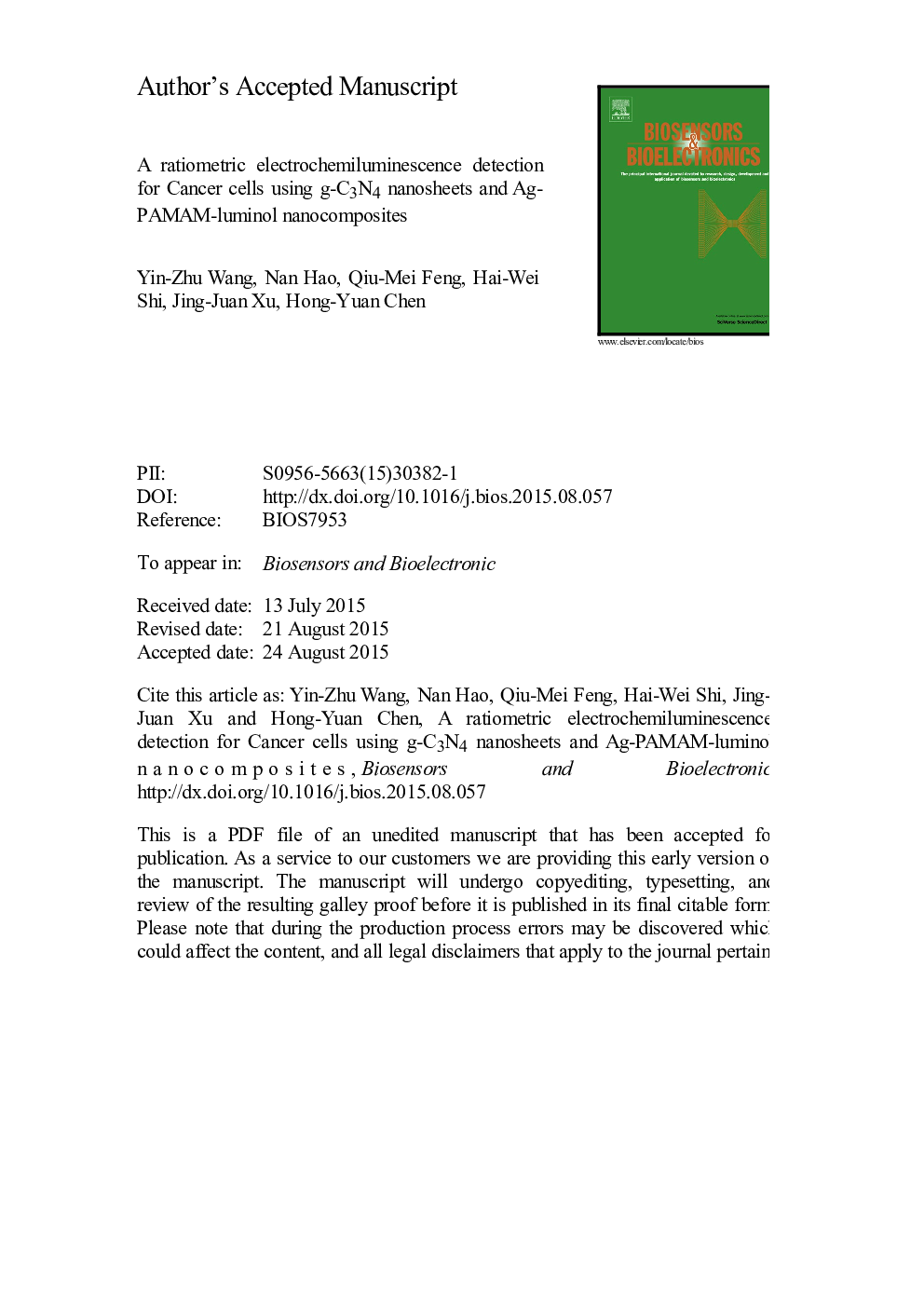| Article ID | Journal | Published Year | Pages | File Type |
|---|---|---|---|---|
| 7231266 | Biosensors and Bioelectronics | 2016 | 26 Pages |
Abstract
In this work, a dual-signaling electrochemiluminescence (ECL) ratiometric sensing approach for the detection of HL-60 cancer cells was reported for the first time. G-C3N4 nanosheets and Ag-PAMAM-luminol nanocomposits (Ag-PAMAM-luminol NCs) were prepared and served as reductive-oxidative and oxidative-reductive ECL emitters respectively. DNA probe functionalized Ag-PAMAM-luminol NCs would hybridize with aptamers modified onto magnetic beads. In the presence of HL-60 cells, the aptamer would conjugate with the target cell and release Ag-PAMAM-luminol NCs. After magnetic separation, released Ag-PAMAM-luminol NCs would hybridize with capture DNA on g-C3N4 nanosheets. ECL from g-C3N4 nanosheets coated on ITO electrode at â1.25Â V (vs SCE) could be quenched by Ag-PAMAM-luminol NCs due to the resonance energy transfer (RET) from g-C3N4 nanosheets to Ag NPs. Meanwhile, Ag-PAMAM-luminol brought the ECL signal of luminol at +0.45Â V (vs SCE). Thus, the concentration of HL-60 cancer cells could be quantified by both the quenching of ECL from g-C3N4 nanosheets and the enhancement of ECL from luminol. By measuring the ratio of ECL intensities at two excitation potentials, this approach could achieve sensitive and reliable detection for cancer cells in a wide range from 200Â cells/mL to 9000Â cells/mL with the detection limit of 150 cells (S/N=3).
Related Topics
Physical Sciences and Engineering
Chemistry
Analytical Chemistry
Authors
Yin-Zhu Wang, Nan Hao, Qiu-Mei Feng, Hai-Wei Shi, Jing-Juan Xu, Hong-Yuan Chen,
